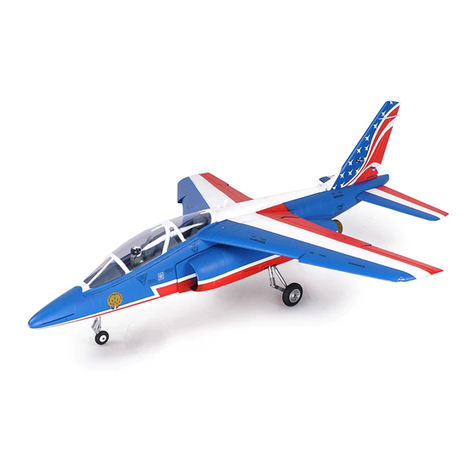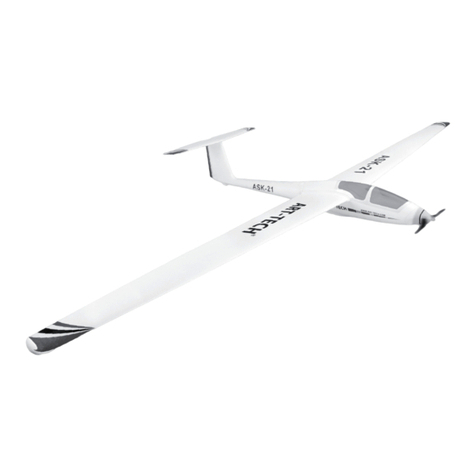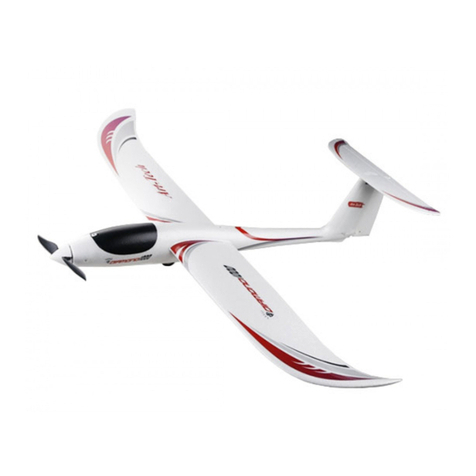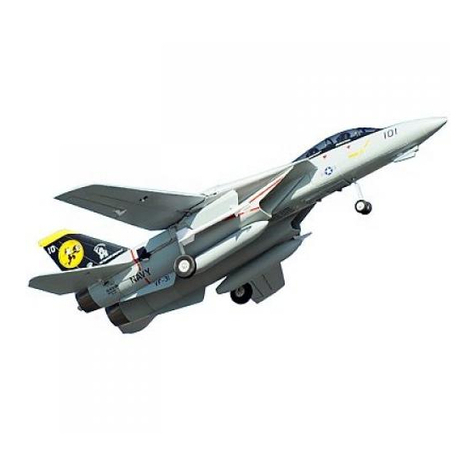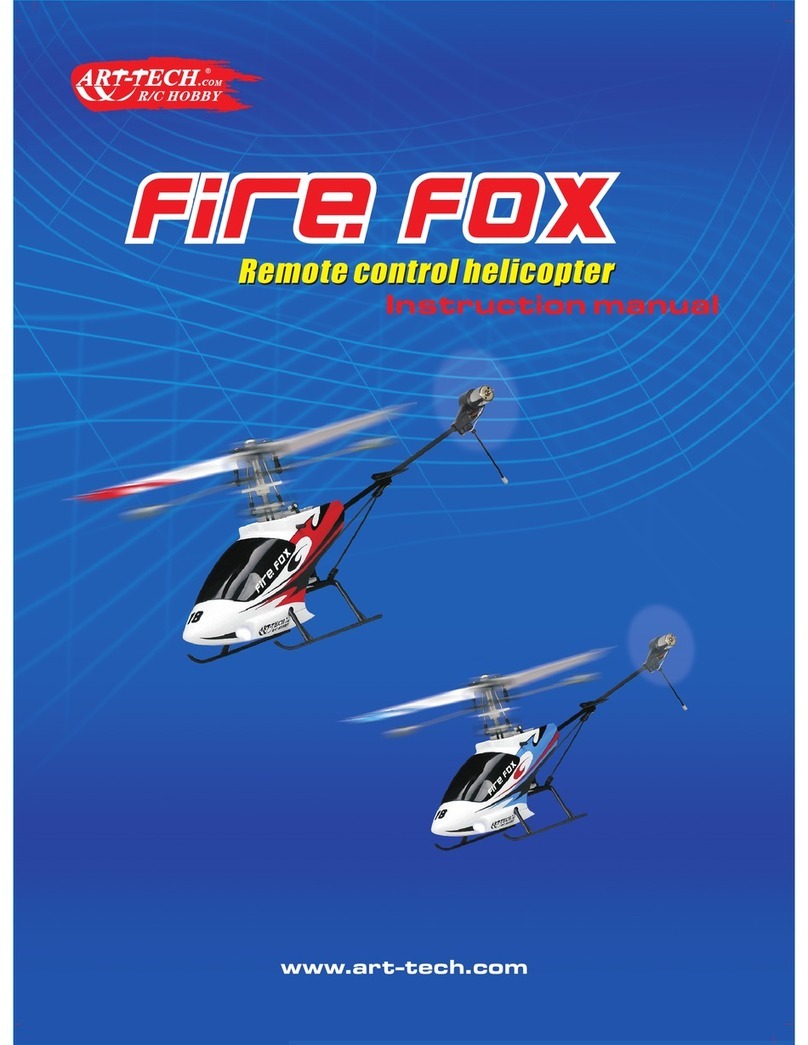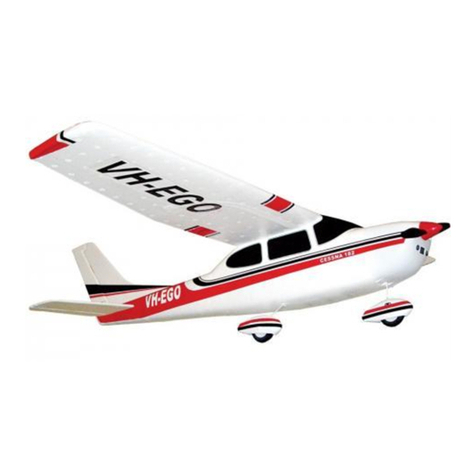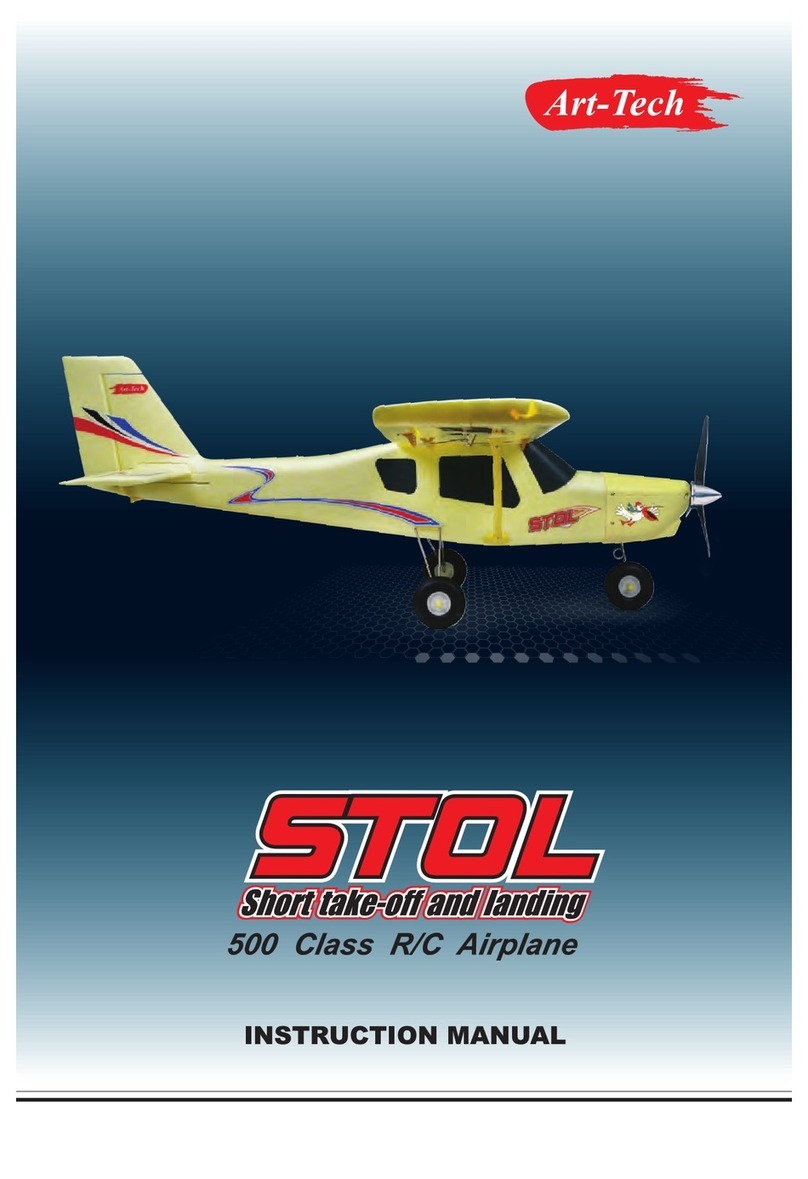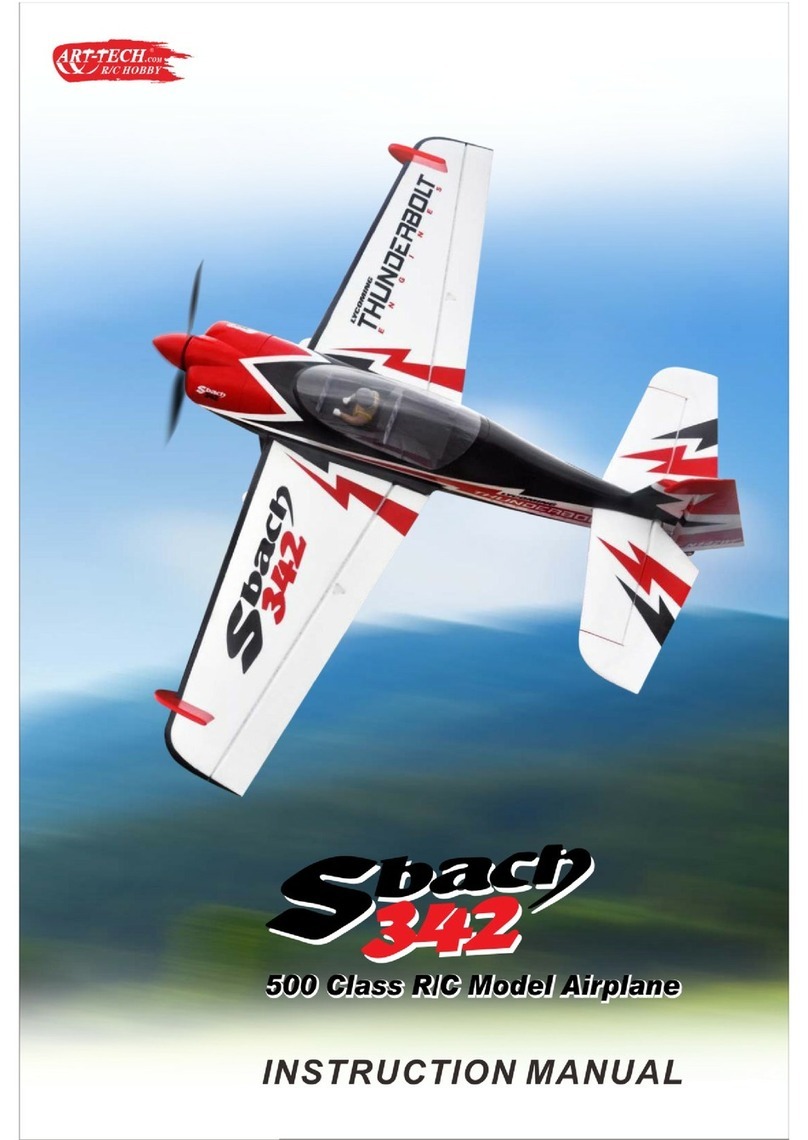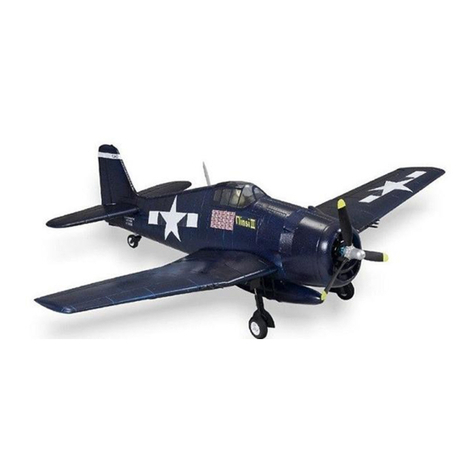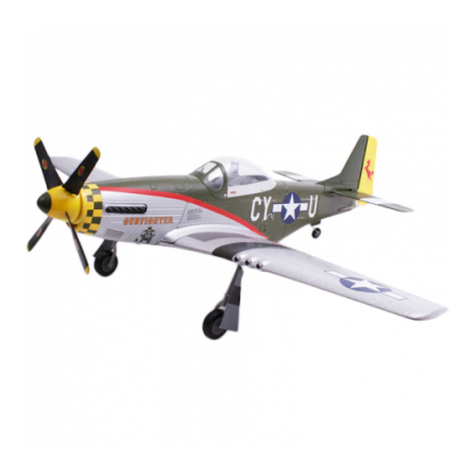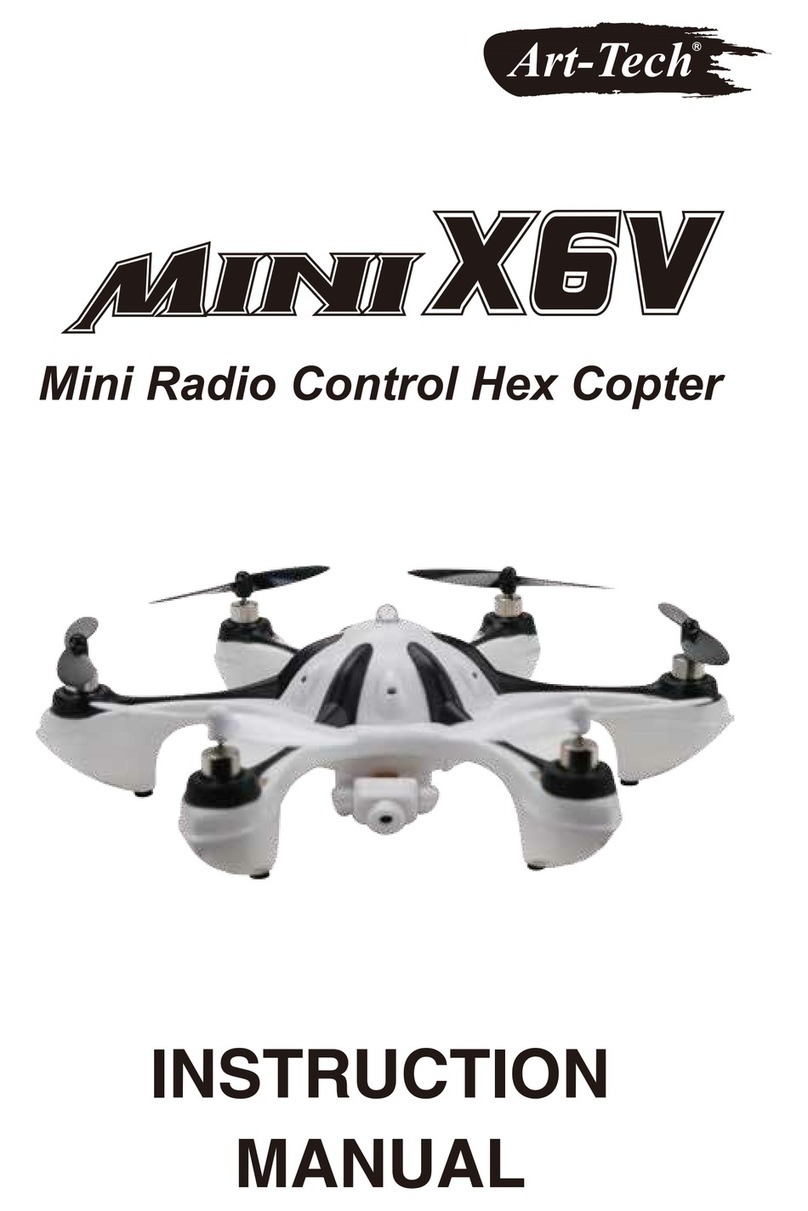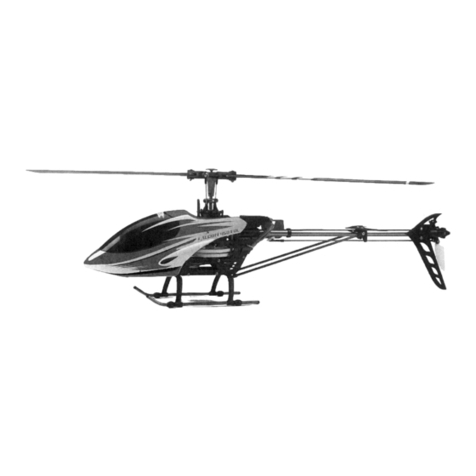PREFLIGHT CHECKLIST
of the helicopter and cause a crash or serious personal injury.
10.After completing your flight disconnect the power from the battery in the helicopter first, then you
may turn off your transmitter. Never turn off the transmitter first since it could cause you to loose control
www.art-tech.cn
10
Suggestion: if there is no deflexion, it is better to increase the gain of gyro.
3.Plug the CH4 and CH5 signal connecters to the receivers respectively and connect the servo on the
tail pipe.
4. me.Switch the transmitter on and center the rudder joystick as well as the tiny mix. Connect the receiver
to the power and wait
5.Set the reverse switch on the gyro: Turn the helicopter head to the left, if the servo's movement on the tail
pipe the same as the servo's when turning rudder joystick right and that means the direction is ok. Or you
need to turn the reverse switch to the other end.
6.Gain adjustment: when testing the helicopter, to watch whether there is a deflexion. If it exists, and tail
wing turns right,you need to turn the gain switch right to increase the gain and vice versa.
The following actions should be perfor med by the operator prior to flight.ever y
1.Ensure that the blades have been balanced and are equally tight on the blade grips, Note: if you hold
the helicopter on its side the blades should be tight enough that they do not drop even if model is shaken.
2.Inspect the helicopter for any loose wiring, screws, fasteners, connectors, prior to flying.
3. Turn on your t ransmi tter firs t followe d by connecting the battery to the speed controller in the
helicopter, you should also ensure that the 3D switch is set to normal and the throttle is set to off, i.e.
all the way down.
4.Walk away from the helicopter with the antenna collapsed to check range, you should be able to walk
50 paces away and still have full control over the helicopter. If the distance is significantly less
check antenna wire and connections on the receiver of the helicopter.
5.Check the CG (center of gravity) by having the main blades at 12:00 o'clock and 6 o'clock. Lift the
helicopter by the fly bar and observe the landing skids. The skids should be level with the ground
and not leaning forward or backward. If they lean adjust the position of the battery by sliding it leans
it backwards or forwards until the skids remain level.
6.If this is your first flight, it is strongly recommended that you use the provided training gear before
attempting . the training gear w ill prevent a tip over which can cause blade to fly the model tipping, and
or main shaft damage. once you have your helicopter you can remove the training gear.learnt to hover
7.Fully extend the antenna prior to lift-off this will ensure you have maximum radio range.
8.Slowly apply throttle and observe the rotor disk, it should appear perfectly flat with no noticeable tilt or
lean. If the rotor seems tilted or is leaning move the trim levers on the transmitter until the rotor disk
appears flat.
9.After lift-off and holding the helicopter in a hover it should require very little input on the sticks to
maintain a stable hover. Should the helicopter wander forwards backwards or side to side, adjust the trim
levers on the transmitter until the hover is stable. Note: a well trimmed helicopter should be able to
hover for short periods with very little input from the pilot.

